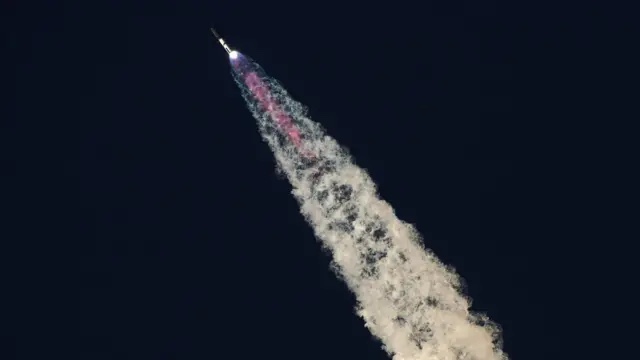
On October 13, 2024, SpaceX launched its Starship, the largest and most powerful rocket ever built, from its Starbase facility in South Texas. This marked the fifth test flight of the vehicle, which aimed to demonstrate a groundbreaking capability in spaceflight: the successful recovery of the Super Heavy first-stage booster. The launch occurred at 8:25 AM EDT, and about seven minutes after liftoff, the Super Heavy executed a flawless landing, captured by the launch tower’s innovative “chopstick” arms.
SpaceX’s manager of Quality Systems Engineering, Kate Tice, described the event as a monumental achievement in engineering, stating, “This is a day for the engineering history books.” The successful recovery of the booster was celebrated as a major step towards making space travel more efficient and cost-effective.
In addition to the booster recovery, the mission also aimed to send the 165-foot-tall Starship upper stage into space and return it to Earth. Approximately 65 minutes post-launch, the Starship fired three of its six engines to hover above the Indian Ocean before ultimately exploding during the splashdown attempt. Despite the explosion, Tice expressed satisfaction with the mission’s outcome, noting that they had not planned to recover any part of Starship, making the splashdown a successful conclusion.
Elon Musk, SpaceX’s founder and CEO, highlighted the significance of the flight, tweeting that it represented a “big step towards making life multiplanetary.” SpaceX’s goal for the Starship program is to develop a fully reusable spacecraft capable of supporting missions to the Moon, Mars, and beyond. NASA has also placed its faith in the Starship, selecting it as the first crewed lander for its Artemis program, which aims to land astronauts on the Moon for the first time since the Apollo missions.
This latest flight follows a series of test flights, each progressively more successful, with significant modifications made to enhance the vehicle’s performance. The company had faced regulatory hurdles, as the U.S. Federal Aviation Administration (FAA) required a more in-depth review due to modifications made for this flight. However, the mission’s success underscores SpaceX’s determination to push the boundaries of space exploration and their eagerness to conduct further test missions in the near future.














